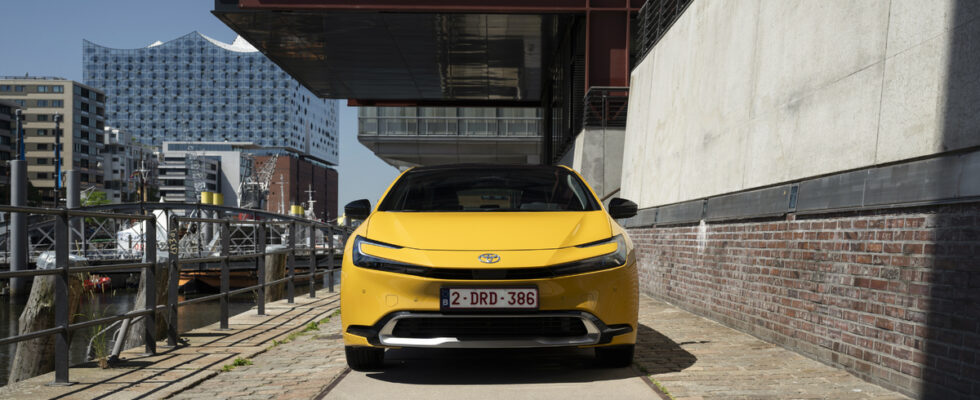The fifth generation of the Toyota Prius is only available as a plug-in hybrid in Europe. ©Toyota Motor Corporation
We hear everything and its opposite about the environmental impact of electric cars. It must be said that from one case to another, they can be less polluting than a thermal model, or more, depending on the place of their production, the battery and motor technologies, the production of energy which is used to power them during their period of use, et cetera.
In the 2024 edition of the GreenerCars study by the NGO American Council for an Energy-Efficient Economy (ACEEE), it is a plug-in hybrid model (PHEV) which emerged this year as the most popular car less polluting of the American market. To establish this classification, the study was based “on the cost to human health of air pollution associated with the manufacture and destruction of vehicles, the production and distribution of fuel or electricity, and vehicle exhaust emissions”.
In total, more than 1,200 cars were studied. This resulted in a first ranking of the twelve least polluting models. Seven of them are electric (EV), three are hybrid (HEV) and two are plug-in hybrid (PHEV). It is therefore the Toyota Prius which has established itself in a plug-in hybrid version, which is now the only one to be available in Europe. More precisely, it was in the entry-level Prime SE version that it obtained the best score, with a Green Score of 71 points.
The ranking of the least polluting cars according to the GreenerCars 2024 study. © American Council for an Energy-Efficient Economy (ACEEE)
Surprisingly, it is the large electric SUV Lexus RZ 300e which takes second place in the ranking (Green Score by 67 points), ahead of more compact, lighter models equipped with smaller batteries, such as the Mini Cooper SE (Green Score of 67 points) and the Nissan Leaf (Green Score of 66 points), respectively ranked third and fourth. The gigantic GMC Hummer EV SUV, on the other hand, does much less well and ranks as one of the most polluting cars in the ranking (Green Score by 29 points), alongside many other pick-ups and SUVs, some specific to the North American market, but equipped with gasoline engines without hybridization.
The ranking of the most polluting cars according to the GreenerCars 2024 study. © American Council for an Energy-Efficient Economy (ACEEE)
The plug-in hybrid: a double-edged technology
But then how was a model equipped with both a thermal engine, but also a battery and an electric motor, able to establish itself as the least polluting car? If the ACEEE study is quite sparse in terms of explanations, we suspect that the small battery of the Prius (13.6 kWh) compared to 100% electric cars worked in its favor. It makes it possible to reduce the environmental impact of the production of the car, but still make the majority of its journeys electric, avoiding burning fuel when it is not “necessary”. In any case, this is the basic idea of plug-in hybrid cars, but their use is unfortunately too often misused.
Thus, several studies have already demonstrated that plug-in hybrid cars have polluting emissions in real conditions that are significantly higher than the announced values. This difference is due to the fact that their drivers recharge their cars on average much less frequently than estimated in the approval cycles.
This does not call into question the conclusion of the ACEEE study, but simply reminds us that if the plug-in hybrid has the potential to reduce the environmental impact of our cars, drivers still need to play the game. The Toyota Prius at least has the merit of being particularly fuel-efficient even when the battery is discharged, which is not the case for all of its counterparts. This also allowed the Prius to emerge as the car with the lowest “fuel” cost in this study, again ahead of 100% electric models.
Like all studies of this type, these conclusions may vary depending on each user’s use. The electricity production of each country can completely change the situation in environmental terms and charging habits, at home or at a public terminal, can greatly vary the cost of use.
